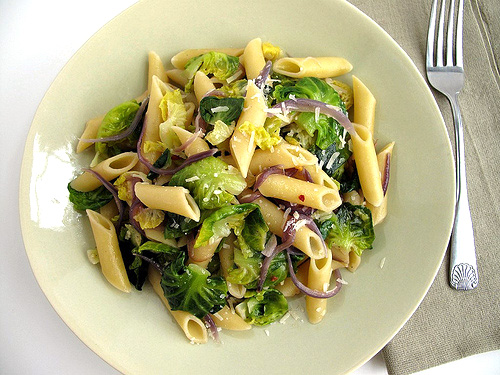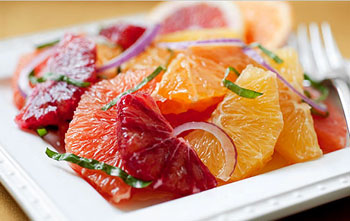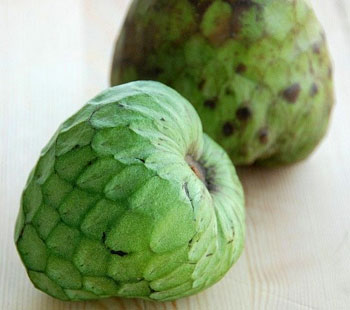 There's no other month that represents comfort food better than December. Right now it's all about soups, stews, roasts, and much more. But sometimes all that rich food is just too much to handle! (Thanksgiving was for me.) So when I crave something comforting that doesn't weigh me down, I turn to pasta.
There's no other month that represents comfort food better than December. Right now it's all about soups, stews, roasts, and much more. But sometimes all that rich food is just too much to handle! (Thanksgiving was for me.) So when I crave something comforting that doesn't weigh me down, I turn to pasta.
Old fashioned spaghetti and meatballs or any other tomato sauced pasta dish is always a welcome meal around this time. But my favorite way to enjoy pasta is with simple flavors and seasonal produce. A dish like this pasta with sautéed Brussels sprouts is perfectly comforting and light, all at the same time. There aren't too many comfort foods that can be both.
This recipe is unique because the sprouts are separated into leaves and then sautéed. There's no need to worry about smelly and awful tasting sprouts since sautéing is a gentle cooking method that coaxes out all the sweet flavors of the sprouts. Red onions add additional sweetness to the dish and Parmesan cheese creates a thin sauce that clings to the pasta and vegetables. This dish is worth making now while Brussels sprouts are in season.

 Good citrus can almost make you glad it’s winter. When it’s in season — that’s now — it’s equal or superior to anything else you can buy in the plant kingdom. Any way you can devise to eat it, you’re taking advantage of something at its peak.
Good citrus can almost make you glad it’s winter. When it’s in season — that’s now — it’s equal or superior to anything else you can buy in the plant kingdom. Any way you can devise to eat it, you’re taking advantage of something at its peak. For the last two weeks I have had an intermittent problem with my furnace. I have a wonderful technician, but it was a difficult thing to figure out. Did I mention that it is Winter in Maine and even with a back up heat source it is imperative to solve it and solve it fast. The elusive part arrived this morning and Tony quickly came out yet again to my house. I asked him to come in and have a cup of tea with me as I always do and explain what he did to my furnace. I hoped that he would reassure me that it was fixed once and for all.
For the last two weeks I have had an intermittent problem with my furnace. I have a wonderful technician, but it was a difficult thing to figure out. Did I mention that it is Winter in Maine and even with a back up heat source it is imperative to solve it and solve it fast. The elusive part arrived this morning and Tony quickly came out yet again to my house. I asked him to come in and have a cup of tea with me as I always do and explain what he did to my furnace. I hoped that he would reassure me that it was fixed once and for all. The cherimoya (pronounced chair-uh-MOY-yuh) is the king of fruit. This is no surprise given that this ancient Incan fruit was originally reserved for royalty.
The cherimoya (pronounced chair-uh-MOY-yuh) is the king of fruit. This is no surprise given that this ancient Incan fruit was originally reserved for royalty. Just when I thought fava beans had a lot of names, along comes the kiwifruit (kiwi)
Just when I thought fava beans had a lot of names, along comes the kiwifruit (kiwi) 
